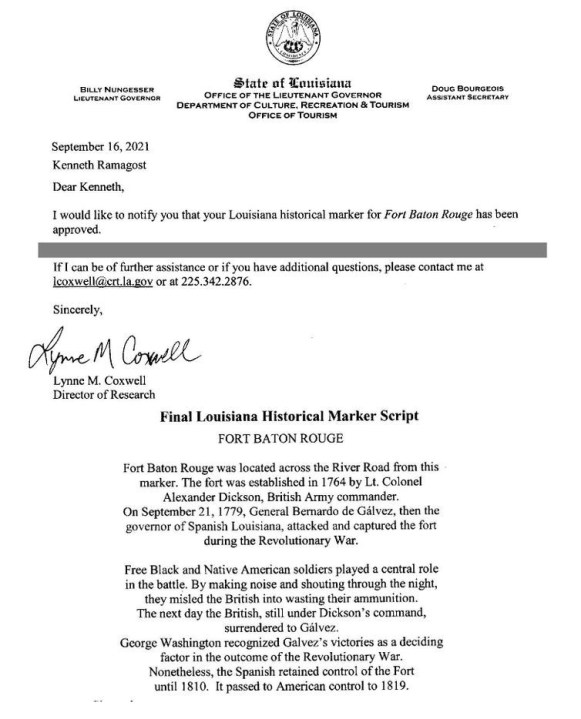BATON ROUGE, La. (WGNO) — In January 1777, Bernardo De Galvez is the Spanish Governor of Louisiana. At this same time in history, Great Britain’s colonies up north wanted independence and war was raging. Britain controlled territory uncomfortably close to Spanish territory at this same time.
The Historic New Orleans Collection (THNOC) has a vast collection of maps and a room dedicated to the British, outside of its Chartres street Research room. The exhibition is called Cartographic Legacies. Some of the maps show the territories once occupied by the Spanish, the French, and the British. Jason Wiese is Chief Curator at THNOC and says, “From Baton Rouge and Natchez, all the way East to Pensacola; that’s the British province of British West Florida. Spanish ministers very much want to re-capture what was formally Spanish Florida from Britain.”
Britain had a secret plan to continue moving inward over the Spanish territory. Bernardo De Galvez and Spain initially did not have plans to outright enter into America’s revolutionary war. However, Galvez gained word of Britain building up their military forts along the Mississippi River in preparation to move into Spanish territory. Span had no choice but to stand by the colonies and aid in the effort of the United States.
Galvez quietly prepared a small group of 500 trained troops and around 1,400 militiamen to strike the Fort of Baton Rouge first. While Galvez didn’t have the numbers on his side, he had a remarkable military mind that would serve him well.
“Galvez took his time. He sent a detachment to cut off the fort from reinforcement from the north. He sent another detachment of free colored men, Indians, and white militiamen into a grove of trees to the East of the Fort and told them to make a bunch of noise, cut down trees, and act like they are building guns. He wanted them to make so much noise that they would attract the entire attention of the fort,” says Jason Wiese.
The commotion persisted for days. Meanwhile, Galvez and his men make their entrance on the opposite side of the fort and take the British by surprise. The British have no choice but to surrender. The victory prevented Britain from moving into the Southern and Eastern regions of the country, which would have been troublesome for the United States.
A few decades later, the Spanish sell the Louisiana territory back to France, who then sells it right away to the United States. The stage was then set for the manifest destiny, as the United States would push towards the Pacific to create the United States that we know of today.
Jason Wiese enjoys the period of Bernardo De Galvez and sums up the Battle of Baton Rouge says, “It’s just a chapter that I don’t think a lot of people know about. They don’t know about Louisiana’s part in the Revolutionary War.”
A retired engineer with a fascination of history wants more people to know about the Battle of Baton Rouge.
Kenneth Ramagost decided he would find where the Fort of Baton Rouge once stood and use it as a way to spread the word of Galvez’s contribution to the United States. His research would take about four years to find his answer. Ramagost believes that the Fort of Baton Rouge is directly across from the Louisiana State Capitol by the river next to Fort San Carlos.
“For at least three years, my battle was to get somebody to officially recognize it. I had two scale drawings proving Fort Baton Rouge was there. I went to the state for a historical marker approval. LSU studied it for three months and then the state approved it,” says Ramagost.
Now that Kenneth Ramagost’s historical marker is approved by the state, his next step is to secure funding for it by finding a sponsor.



